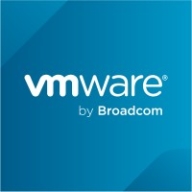

BMC Cloud Lifecycle Management and VMware Aria Automation are competing in the cloud automation and management space. VMware Aria Automation has an upper hand due to its comprehensive feature set, although BMC Cloud Lifecycle Management may offer advantages in pricing and support satisfaction.
Features: BMC Cloud Lifecycle Management is noted for its robust integration capabilities, effective resource management, and strong multi-cloud portal, which makes it suitable for resource optimization. VMware Aria Automation, on the other hand, provides advanced orchestration, integration with several platforms, and a versatile automation framework, focusing on extensibility and detailed automation.
Room for Improvement: BMC Cloud Lifecycle Management could enhance its automation capabilities and integration with newer third-party applications. It may also benefit from an intuitive user interface and expanded reporting features. VMware Aria Automation could improve by simplifying its deployment processes, enhancing its UI for administrators, and expanding support for more hybrid cloud solutions.
Ease of Deployment and Customer Service: BMC Cloud Lifecycle Management is appreciated for its straightforward deployment process and reliable customer service, making it ideal for organizations seeking a quick setup. VMware Aria Automation provides extensive customization support, though its deployment can be more complex, appealing to those needing detailed setup options.
Pricing and ROI: BMC Cloud Lifecycle Management is considered cost-effective due to lower initial setup costs and favorable ROI outcomes. VMware Aria Automation, despite higher upfront costs, offers substantial long-term returns owing to its advanced automation capabilities and feature-rich offerings.
| Product | Market Share (%) |
|---|---|
| VMware Aria Automation | 9.5% |
| BMC Cloud Lifecycle Management | 0.9% |
| Other | 89.6% |

| Company Size | Count |
|---|---|
| Small Business | 32 |
| Midsize Enterprise | 24 |
| Large Enterprise | 130 |
VMware Aria Automation is a cloud management tool that allows companies to simplify their cloud experience through a modern automation platform. The solution is designed to deliver self-service clouds, multi-cloud automation with governance, and DevOps-based security and infrastructure management. It helps organizations improve IT agility, efficiency, and productivity through its various features.
VMware Aria Automation has multiple use cases that include the following:
VMware Aria Automation Features
VMware Aria Automation has various features that allow users to easily perform operations. Some of the solution's capacities include:
VMware Aria Automation Benefits
VMware Aria Automation offers its users various benefits. Some of the biggest advantages that the solution brings to companies that utilize it include:
Reviews from Real Users
Awais J., CTO/CEO at a tech services company, likes VMware Aria Automation because it saves a lot of time, provides more visibility, and has extensive automation capabilities.
An IT consultant at a government rates VMware Aria Automation highly because the product gives you flexibility to analyze and consume resources.
We monitor all Cloud Management reviews to prevent fraudulent reviews and keep review quality high. We do not post reviews by company employees or direct competitors. We validate each review for authenticity via cross-reference with LinkedIn, and personal follow-up with the reviewer when necessary.